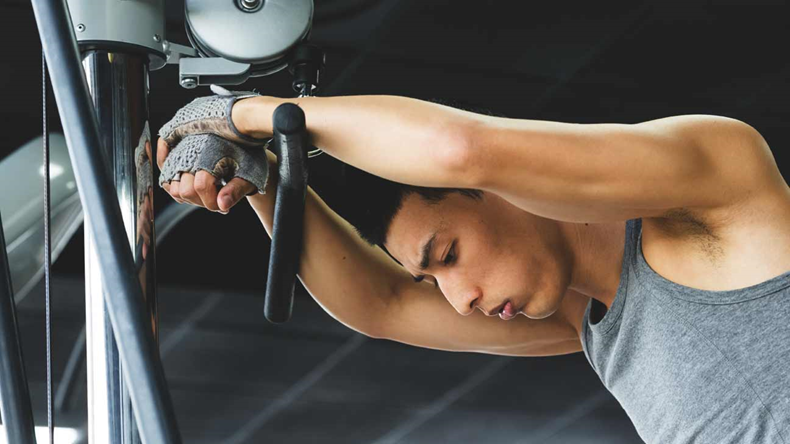Look in the mirror, observe yourself and name 5 things you hate and adore in your body. When talking of majority cases, people will find more negatives than loved parts in their physique or facial features.
Some would point certain body parts as disproportionate, hair too curvy or too thin, body weight to be very high or very low, excessive or under required fat in an area, despite all of them being normal and beautiful in someone else’s eyes. People tend to have their own beauty standards.
What and why and how is it eating me?
Blooming from ages 12-13, young adults and teenagers fall prone to the aforementioned characteristics, formally named as ‘Body Dysmorphic Disorder’, a condition where one is obsessively occupied with a certain body flaw.

Pubertal changes trigger thoughts of being not good or pretty enough to fit in. Media exposure, social comparisons, personal fables are all apt to be counted as culprits.
Girls prefer a lean body, clear skin and attractive posture while boys go after muscle gain and a broad physique. Nature throws females particularly sensitive to this; considering the increase in weight and muscles, pubertal years bring.
So, it sticks?
It depends on one’s mechanisms of coping with the obsessive thoughts and keeping the needed control. When or if the situation continues, the person suffers the disorder throughout his/her adult life and might develop other ones linked with BDD such as obsessive compulsive disorder and eating disorders (Anorexia Nervosa and Bulimia).
Does it manifest itself outwards?
Yes, in order to seem acceptable and attractive enough, teenagers unknowingly indulge in micro-rituals such as checking the mirror very often, picking at the skin, controlling daily diets,
excessive cleaning or grooming of certain parts that seem non- presentable and can also involve themselves in bigger compulsions like plastic surgeries.

Other behaviours are avoidant rather than compulsive. Doing too much rather than doing. Some people avoid eye contact, bow their heads, or turn away from others.
Some people avoid being photographed. They cut their face out of a photo or discard all photos ever taken. One man avoided chores for fear that any activity would make his calves grow. Some people avoid showering, washing or brushing their hair for fear of increasing hair loss.
We are all chasing unrealism?
A percentage of 2.5 in males and 2.2 in females was found affected with Body Dysmorphic Disorder in the U.S.
So in case you are wondering if the latest generation has some unrealistic or unachievable standards of satisfaction for their beauty, the answer is clearly YES. No matter how adorable they appear to someone, to themselves they will remain defected in a certain body part. After losing 5 kgs , one would want to lose 5 more.
But why? What’s the Science?
This caters to the psychology of body dissatisfaction.
A person’s heredity, environment and psychological aspects combined with his/ her personality type cause or trigger BDD.
The preference for physical symmetry, which concerns one-third of BDD patients, may have a biologically evolutionary basis. Researchers have found that some animals prefer symmetry in a partner’s appearance. For example, Japanese scorpion male flies with the most symmetrical wings gain the most mates. Symmetry, or smooth, blemish-free skin, has an evolutionary and neurobiological basis and may indicate fertility and health, or the absence of disease.
In the animal world, being larger has some advantages, and larger bodies tend to dominate. In fact, animal and evolutionary models of social dominance and submission may also be associated with BDD, with people with BDD being less assertive and prone to inferiority complexes toward others.
Certain Animal behaviour also provides clues to the possible neurobiological underpinnings of BDD. For example, dogs with a condition known as tip licking syndrome compulsively lick their fur, especially their paws, until they cause painful wounds and infections. Some birds compulsively pluck feathers, similar to compulsive grooming and skinning in BDD. In animals, the brain chemicals serotonin and dopamine, as well as some of the brain regions (orbitofrontal cortex and striatum), are implicated in hyper stereotypic behaviours such as excessive grooming. It is interesting that these abnormal grooming behaviours can be ameliorated in animals with serotonin reuptake inhibitors, as seen with BDD.
Any personal factors?
Indeed, Perfectionism might also fuel BDD symptoms in another way. Research suggests that for people with
BDD, there’s a big discrepancy between how they think they actually look and
- How they ideally would like to look and
- How they think they should look.
Certain childhood experiences may increase the risk of BDD. A child learns that appearance is very important, learns to associate physical attraction with being desirable or successful, or receives more positive attention or other rewards for being cute and hence, becomes more likely to develop BDD.
Bigorexia, or BDD in bodybuilding!

A subtype of BDD, Commonly known as the Adonis Complex or bigorexia, Muscle dysmorphia is “a collection of attitudes and behaviours that are characteristic of an extreme desire to gain body mass.” For example, in one study, college men were asked to identify an ideal body image for men. Overwhelmingly, they chose an image with about 28 more pounds of muscle than an average male body. They also reported believing women to prefer a male body with 30 pounds more muscle than they currently possessed. Yet an accompanying study indicated women actually preferred an ordinary male body without added muscle.
How to identify?
Many of the symptoms manifest in a variety of ways. Men who suffer from muscle dysmorphia are prone to obsessively adhere to strict workout and weightlifting regimens, may spend more than four hours per day at the gym, consume protein shakes that may replace meals, and have extremely restrictive diets and may or may not take steroids.
Stems from?
One of the largest influences related to muscle dysmorphia, as with eating disorders and other body dysmorphic disorders, is the influence of the media. Similar to women portrayed in the media, the body images of portrayed men are becoming more unattainable and unrealistic. The standard for culturally-based aesthetic perfection is constantly being raised.
Any way to help?
Previous studies have shown the influence media has on the male image, so education on the false realities of the image could be greatly beneficial. Along with media inoculation, more education on general health, wellness, and nutrition could be marketed towards men. In the realm of student affairs, positive body image for men and women should specifically be reinforced in college gyms and residence halls through realistic body portrayals. On a larger scale, we, as a society, need to shift our paradigm of eating disorders and body dissatisfaction issues from focusing only on women to reflecting both genders.
The idea that men need to be big and strong, the providers and protectors of women, and of humanity in general, only perpetuates the false idea of men’s muscularity and masculinity. Strict body regimens are seen as desirable for men. If a woman practices excessive exercise habits it is seen as a red flag for possible problems. However, if a man exhibits the same habits, he is seen as disciplined, focused and hard-working.

Everything from the Abercrombie models seen in advertisements, the hero visible in video games, the bodybuilding Mr. Universe competition, and the many commercials for home weight-training systems, all reiterate to society what men should look like. Instead, the idea of a truly healthy body image for both men and women needs to be reinforced in all the ways possible in our society and culture. Next time you look at yourself or avoid doing so, recall that you acquired it and despite the existing or imagined flaws, you are Adorable!




